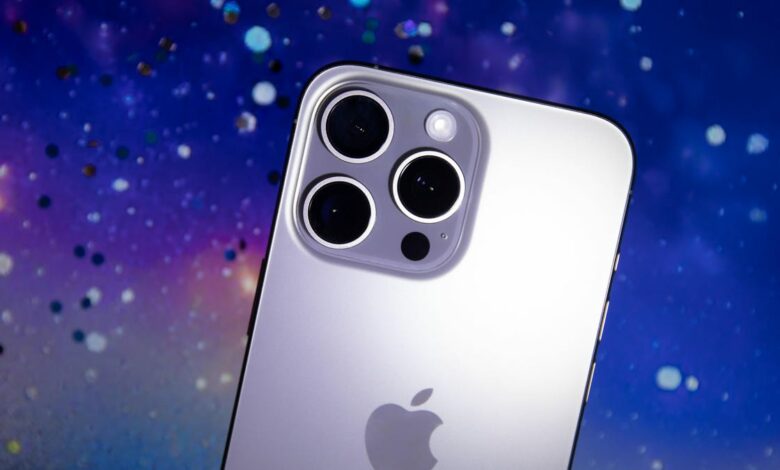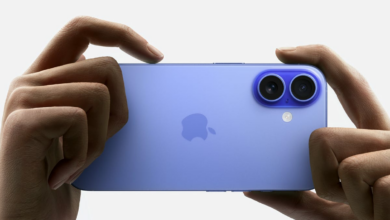Will the iPhone 16 have a higher price tag? Here’s what we expect


For all the flashy presentations about camera specs and battery capacity, one of the biggest questions hanging over every new phone reveal is: How much will it cost? As we approach the expected announcement of the iPhone 16 this fall, that question gets asked – and speculated about.
Apple has shared upcoming Apple Intelligence features coming to some of its latest devices, while also revealing new capabilities coming with iOS 18 this fall. With the company’s premium-tier devices getting even more advanced with the help of AI and, potentially, more high-end materials, iPhone fans are wondering if those advancements will come with a higher sticker price.
Read more: iPhone 16: What we know about release date, leaks and more
Despite improved features, the starting price of the base iPhone has remained consistent over the past few years. Every base model between the iPhone 12 and 15 was priced at $799 upon release in the US. The Pro devices have also remained at $999 throughout that timeline.
Last year saw a price hike for the high-end iPhone 15 Pro Max, which retailed for $1,199, $100 more than its predecessors. Apple ditched its lowest-end 128GB of storage option, making 256GB the new (more expensive) baseline. The 15 Pro Max also gets a periscope lens, offering a 5x zoom not found even on the smaller 15 Pro.

Check this out: Latest iOS 18 Rumor Roundup: New Designs, AI Tricks
With inflation driving up prices for just about everything and rumors suggesting new iPhones will feature more expensive components, it’s uncertain whether Apple can resist raising the price tags on its flagship phones. Here’s what we’ve heard.
Components and cameras: the culprits behind the iPhone 16 price hike
External factors such as higher production costs could potentially prompt Apple to increase the prices of its upcoming lineup. According to Nikkei AsiaThe estimated production cost of the iPhone 15 Pro Max was $558, up 12% from the 14 Pro Max. Component costs for other devices in the iPhone 15 lineup also reportedly increased year-over-year, with the 15 Pro up 8%, the Plus up 10%, and the standard up 16%. While Apple has yet to raise retail prices as a result, Nikkei Asia suggests it should, otherwise “the company’s profits will ultimately take a hit.”
Rumors about more expensive cameras on the iPhone 16 Pro and Pro Max further suggest that those devices could also carry a higher price tag. According to Economic DailyApple could use higher-quality molded glass lenses to make its phones lighter and thinner and increase optical zoom.
On the one hand, Apple may feel compelled to pass those rising costs on to its customers. On the other hand, the higher cost of living is causing many consumers to open their wallets and Apple may not want to isolate potential candidates for phone upgrades.
Other rumors suggest prices could rise even further. drop for the iPhone 16, according to a tipsterbecause Apple could change the way it makes its A17 Bionic chipsets to cut costs. Those lower production costs could potentially pass on savings to consumers, but that’s speculation.
AI could also increase the price
It’s possible that Apple is touting its upcoming Apple Intelligence capabilities to justify a higher price for the iPhone 16 line. If you can do more with your phone, like use a smarter version of Siri and take advantage of AI-powered writing tools, perhaps the company will also argue that you should pay more.
For example, Samsung introduced its own suite of AI features called Galaxy AI, while simultaneously raising the price of its high-end Galaxy S24 Ultra by $100, bringing its starting price to $1,300. This can also be attributed to hardware and other software improvements, but AI was made to be a big selling point for the expensive device.
Google’s Pixel 9 lineup is also packed with Gemini AI capabilities, and while the latest Fold model hasn’t increased in price, the same can’t be said for the standard Pixel 9, which is $100 more expensive than the Pixel 8. The base Pixel 9 Pro retains the same $1,000 price tag as last year’s Pixel 8 Pro, but it’s a smaller device; you’ll need to upgrade to the Pixel 9 Pro XL if you want that larger display – and pay an additional $100 again.
In short, there are both hardware and software considerations that go into determining the price of a phone. Apple could argue that advances in both areas, particularly AI, justify a higher price for customers.
What does all this mean for iPhone 16 pricing?
It’s possible, given rising production costs and more advanced components, that we’ll see price increases in the upcoming iPhone lineup, though it’s unclear by how much. Apple could also use AI advancements to justify a potential price increase, given that you can technically do more with your phone.
But given the fierce competition with other AI and phone makers like Google and Samsung, it’s just as reasonable to assume that prices will remain the same to attract more customers, especially as prices elsewhere continue to skyrocket.
In the meantime, we’ll continue to keep you updated with new details as Apple heads up to its anticipated iPhone 16 reveal this fall.




